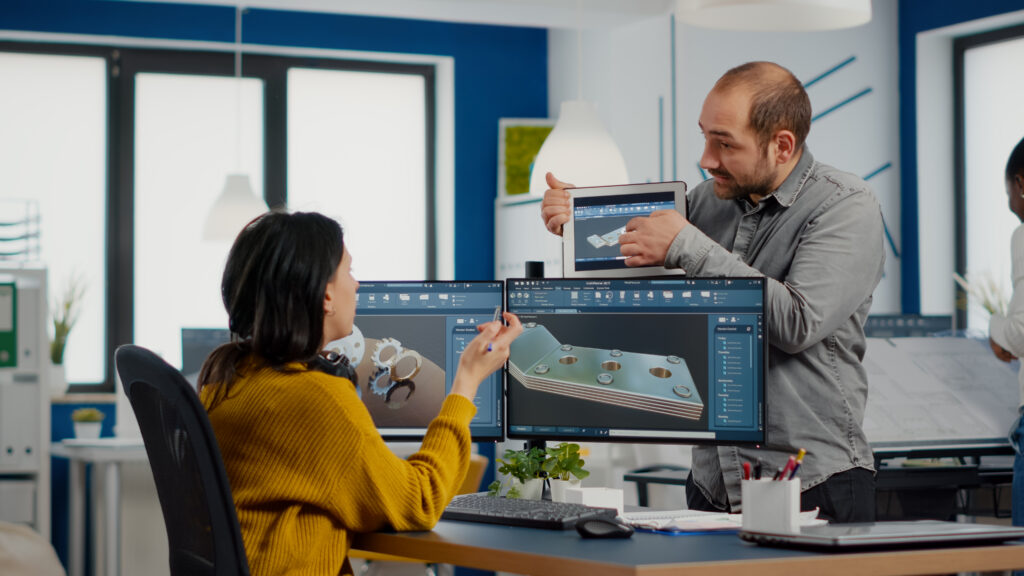Prototype-making can involve multiple steps and variables. Understanding how rapid prototyping works is essential for manufacturers because processing can affect the price and purpose. Here is what you need to know about prototype-making for optimal outcomes.
Prototype-making is a unique manufacturing process allowing teams to innovate with various designs and materials. It helps entrepreneurs and businesses develop enhanced products and improve existing inventories. However, multiple variables can determine the timeline, budget, and outcome. Understanding prototype-making step-by-step is essential.
Many manufacturers will skip the prototype-making process in the interest of time and cost-effectiveness. They might also spend extra resources to win a competitive edge over the industry. Meanwhile, rapid prototyping allows engineers to streamline their approach and cut costs.
“Teams often pay more to manufacture products not started with RP.”
Deciding whether rapid prototyping makes sense requires considering the variables. This article will describe prototype-making and explore the different use cases. It will also discuss the most crucial steps of RP and provide tips for maximizing your efforts. Let’s get to it.
Table of Contents
What Is Prototype-making Used For?
Prototype-making: Things to Consider
How to Make a Scale Model with Rapid Prototyping
Step One: Conduct Research on Industry Expectations and Competitors
Step Two: Create an Initial Design Blueprint
Step Three: Develop the First Virtual Model with Advanced Software
Step Four: Begin the Prototype-Making Process
Step Five: Test the Scale Model for Efficacy and Affordability
Five Tips for Reducing the Cost of Prototype-making
Questions to Ask Your Prototype-Making Team
What Is Prototype-making Used For?
Prototype-making is a complex process with a direct benefit. It serves countless economies as innovators play with revolutionary concepts and turn exciting ideas into realities. RP establishes a baseline design upon which the engineers can add, subtract, multiply, or divide elements. Rapid prototyping also helps reveal flaws for troubleshooting or cost-effective redesign.
High-volume manufacturers and specialty fabricators can use prototype-making to align outcomes with varied and strict industry standards. ISO regulations determine design specifics for most teams, and rapid prototyping helps ensure consistent compliance. Remove manufacturing obstacles, implement patents, and customize inventories with tailored rapid prototyping services.
Prototype-making is used for a wide variety of other purposes, including these:
- Examine Details – Use RP to look closely at specific elements before mass manufacturing.
- Demonstrate Excellence – Show investors and stakeholders the value of your new design.
- Test Compatibility – Determine whether your plan will assimilate or need more work.
- Certify Legitimacy – Rapid prototyping helps ensure your products will pass inspection.
- Market Introduction – Reveal upcoming developments to public and private audiences.
Get the attention your designs deserve by providing a top-quality product with prototype-making experts. Ask questions, try new things, and get the necessary answers to rise above the noise. We’ll discuss the most essential considerations in the next section.
DID YOU KNOW: NASA developed sustainable in-space manufacturing techniques through prototype-making.
Prototype-making: Things to Consider
“Prototype-making is called the mother of invention.”
It is a multi-step process involving several techniques and many unpredictable elements. However, each step can bring new challenges or solve problems depending on how engineers manage the variables. You must understand the following factors to make the most of rapid prototyping.
#1. Materials Used
Some raw materials can cost more than others, and sheet metal isn’t always an inexpensive alternative. Alloys and synthetic textiles also require fabrication to meet engineering needs. Other pricing and availability factors include sourcing, import and export costs, shipping fees, and facility storage dues.
TIP: Start the prototype-making process with economical options and work up to high-quality materials.
#2. Design Complexity
Detailed product plans can be a higher price tag than straightforward designs. They often require additional machining and fabrication processes to complete. Many also need fine-tuning to ensure elemental compatibility and compliance with industry ISO expectations.
TIP: Begin the prototype-making process with superficial details and move to the complexities later.
#3. Industry Standards
Industry standards for manufactured products vary widely, but nobody can lawfully distribute items not certified by ISO governing bodies. This can change your production plans by requiring additional processing, testing, and certification. Use prototype-making to eliminate errors, compare concepts, and gain approval before producing an entire lineup.
TIP: Work with an ISO-certified manufacturer and seek clarity about industrial regulations.
#4. Prototype Purpose
The primary purpose of your prototype matters, and it’s not all about the costs or lead times. Mindful manufacturing means developing practical products, not just innovative concepts. Prototype-making should help teams align both paths for the most advantageous outcome. However, the details could alter expectations or require additional steps for completion.
TIP: Determine whether you need a scale more for demonstration or a miniature representation.
Craft a scale model with prototype-making to show manufacturing excellence and gain relevant recognition.
“Rapid prototyping allows teams to build before building.”
Let’s explore the process step-by-step next.
How to Make a Scale Model with Rapid Prototyping
Many engineering fields build scale models before mass production as part of their standard manufacturing approach. For example, aerospace engineers use prototype-making to check flight characteristics before fabricating airplane wings. Architects assess building site aesthetics and functionality, and energy researchers predict the environmental impact of power plants before construction.
Scale model prototyping help teams determine valuable information about their designs. The data is only obtained through direct interaction with the product, hence the life-sized elements required. Some groups must also examine and test products in the system environment to catch errors and calculate reactions.
Many manufacturing facilities with prototype-making capabilities develop a site plan as the first step. This helps them determine what investors, stakeholders, and consumers think about their products and ideas. Since blueprints are challenging to decipher, scale model representations help demonstrate what cannot be seen on paper. Prototype-making also uses fewer resources than the existing system and can withstand substantial alterations without additional costs or extended lead times.
Types of Scale Models
Teams can manufacture scale models with prototype-making for multiple reasons. There are few rules when developing concepts and fabricating innovations for testing. However, most engineers use rapid prototyping for these three scale model types:
- Performance Models demonstrate how a specific design performs in isolation and within a system.
- User Interface Models highlight various elements’ practicality, safety, and marketability.
- Functional Models compute data without altering the final algorithm, command, or display.
“Prototype-making gives you the power to invent new products and improve existing ones.”
Work out a project plan with your engineers. Then, follow a step-by-step process to manifest concepts with rapid prototyping. Let’s explore how in the next section.

We offer fast, high-quality, tailored PROTOTYPING solutions for leading companies in a wide range of industries.
superior Rapid PROTOTYPING
Prototype-Making Step-By-Step
Prototype-making for professionals consists of at least five steps. Many of the steps are non-negotiable, meaning you cannot skip them to save time or money. However, each phase is also imperative to the final result. Developing a scale model without obeying the necessary protocols can be a tremendous waste.
Each project can differ based on many things, but the standard operating procedure for RP is as follows:
Step One: Conduct Research on Industry Expectations and Competitors
You should begin by doing some market research on your industry. Determine the consumer base and discover what they’re looking for. Then check out any investors you want to capture. This will help you determine which prototype-making processes to use and avoid. It can help reveal which innovations are working or failing.
Step Two: Create an Initial Design Blueprint
The preliminary design outlines the elements that make your product unique or marketable. It demonstrates to engineers what your concept should look like, how it should operate, and where it fits into the compatible systems. Hence, step three involves making design blueprints for the team. Many experts use tailored strategies to develop blueprints easily transformed into digital models.
Step Three: Develop the First Virtual Model with Advanced Software
Use advanced manufacturing software to develop a three-dimensional virtual model of your design. This involves help from rapid prototyping experts and experienced engineers. They can help you determine which details will benefit your bottom line while eliminating issues before production. This step also helps teams visualize the final product for enhancements and troubleshooting.
Step Four: Begin the Prototype-Making Process
Engineers will plug your design blueprints into a sophisticated computer program for processing. This portion of prototype-making is the shortest but most essential. CAD software can render specific elements on-screen for quick adjustments. Then the team can manufacture parts or the whole product depending on their objectives. Rapid prototyping allows for more intuitive product development and produces much less waste.
Step Five: Test the Scale Model for Efficacy and Affordability
The final step in prototype-making is the testing phase. This is where engineers examine the features and evaluate their efficacies. Meanwhile, there are many more product testing benefits, such as determining the affordability of different elements, ensuring ISO compliance, and aligning the various aspects with consumer demands.
Following all five prototype-making steps can be challenging, but a reputable manufacturer can help streamline the process. Rapid prototyping is also a costly service with high upfront fees. The price deters some teams from initiating the RP process. However, multiple money-saving strategies are available to maintain a tight budget.

We offer fast, high-quality, tailored PROTOTYPING solutions for leading companies in a wide range of industries.
superior Rapid PROTOTYPING
Five Tips for Reducing the Cost of Prototype-making
Prototype-making may be relatively expensive for massive or complex projects. Still, RP can help decrease manufacturing costs by eliminating unnecessary procedures and mitigating human error. Remove the obstacles between concept and reality without scrapping materials or wasting precious resources. Then apply the savings to other elements of your design or marketing plan.
Save money on rapid prototyping services with these five pro tips:
- Use Economical Materials – Choose textiles that are easy to come by. Avoid materials that require additional fees for importing, exporting, shipping, or handling. Also, look for resources approved by your industry’s ISO. Some of the most common RP materials are as follows:
- Aluminum
- Stainless Steel
- ABS
- Acrylic
- Polycarbonate
- Nylon
- Create Straightforward Geometries – Avoid intricate product designs at first. Then integrate more complexities as you scale up. This can help you shave off unnecessary processing while enjoying optimal outcomes.
- Iterate Slowly and Methodically – Don’t rush through the prototype-making process. Use rapid prototyping best practices to prevent oversights and costly mistakes. Manufacture your designs piece by piece to catch hidden concerns before mass production.
- Listen to the Feedback – Ask your engineering team for advice on design efficiency. Determine the best RP approach based on product purposes, industry expectations, and budget limitations. You can adjust different aspects to streamline further and strengthen your designs later.
- Work with Experienced Manufacturers – Making a scale model requires attention to countless specifics and knowledge of CAD software. Experienced facilities can help catch missed details when pertinent to the overall concept. Many can also help reduce your expenditures for prototype-making.
Questions to Ask Your Prototype-Making Team
Don’t initiate a prototype-making project to build a scale model until you receive answers to the following questions:
- What challenges do you foresee with my design, if any?
- How will my chosen materials work together in the final product?
- Do I need to provide any additional information about the prototype?
- When can I expect my scale model to be finished by the engineers?
- Why should I choose a particular RP approach over another?
Need more information about how rapid prototyping works for scale model production? Discuss the details with your team, or reach out to an RP expert for tips.
Conclusion
Prototype-making is a complex process involving advanced manufacturing technology and multiple steps. Develop a scale model for demonstrating and testing elements without wasting time or money on mass fabrication. Meanwhile, join forces with experienced RP experts to manage the variables for optimal outcomes.
Understand how rapid prototyping works and learn what to expect. This can help you determine appropriate budgets and your project’s purpose. For more information on the steps to scale model manufacturing, discuss the details with your team.
 About the Author
About the Author
James Murphy is the founder and CEO of HLH Rapid – a hybrid CNC machine shop fusing Western service and quality with Eurasian industry influences for over 14 years. His advanced enterprise uncovers cost-effective rapid injection molding techniques to remain unmatched by industry competitors. Murphy’s full-service fabrication and manufacturing methods span six dedicated zones, from 3D printing and vacuum casting to sheet metal prototyping and project management. His expertise also includes high-efficiency machining within strict yet volatile markets.
Murphy earned an MBA after becoming inspired by his father’s hands-on craftsmanship. As a budding entrepreneur, he taught English and studied Chinese to pursue pioneering objectives. His groundbreaking approach helps build the future by providing well-rounded manufacturing services to innovative Western businesses. When he’s not offering upscale RP and CNC, James enjoys art-house movies, Thai boxing, and spending time with his growing family.
Visit HLHRapid.com for an instant quote on rapid prototyping services.


